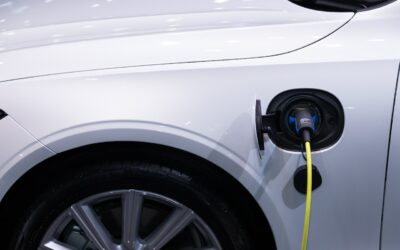This post was originally published on Eco Watch
A team of scientists in Germany and the United States has found that many tall, heavy buildings along South Florida’s coast are sinking into the earth much faster than expected.
The researchers compared several years of satellite images to glean more information about continuing subsidence — where the altitude of a piece of land becomes lower — along a number of South Florida beachfronts, reported Phys.org.
“This study utilizes Interferometric Synthetic Aperture Radar (InSAR) to examine subsidence along the coastal strip of the Miami barrier islands from 2016 to 2023. Using Sentinel-1 data, we document vertical displacements ranging from 2 to 8 cm, affecting a total of 35 coastal buildings and their vicinity. About half of the subsiding structures are younger than 2014 and at the majority of them subsidence decays with time. This correlation suggests that the subsidence is related to construction activities,” the authors of the study wrote.
Earlier research had revealed that subsidence can be caused by many factors. Natural causes include earthquakes, gravity and water movement. Human-made causes include landscaping, fracking and the weight of the built environment, as with large buildings.
The researchers noted that many tall coastal buildings in South Florida appeared extremely heavy, and they wondered if this might be causing the ground underneath them to sink.
To investigate, the research team examined satellite imagery of several of the area’s most popular beaches and compared the buildings sitting on them over time. The imagery is precise enough that it can detect altitude changes of only a few centimeters.
The researchers discovered that all of the buildings they measured were sinking — most of them faster than expected. They highlighted a spatio-temporal connection between new construction in the study area and subsidence.
“In northern and central Sunny Isles Beach, where 23% of coastal structures were built during the last decade, nearly 70% are experiencing subsidence. The majority of the older subsiding structures show sudden onset or sudden acceleration of subsidence, suggesting that this is due to construction activities in their vicinity; we have identified subsidence at distance of 200 m, possibly up to 320 m, from construction sites,” the authors wrote in the study. “We attribute the observed subsidence to load-induced, prolonged creep deformation of the sandy layers within the limestone, which is accelerated, if not instigated, by construction activities.”
Sunny Isles Beach was home to the worst subsidence of all the areas in the study. The second was Surfside, where in 2021 a 12-story building collapsed. The researchers noted that the least subsistence occurred in Miami Beach.
Because of the recent building collapse in Surfside, the researchers took a closer look to see if subsidence could have been a contributing factor, but found no evidence that it was. They added that, if it had been sinking, structural damage wouldn’t have occurred unless the building was sinking unevenly. The team suggested more work would be needed to find out if that is happening with any South Florida buildings so the owners can be made aware of it.
“Anthropogenic and natural groundwater movements could also be driving the creep deformation. This study demonstrates that high-rise construction on karstic barrier islands can induce creep deformation in sandy layer within the limestone succession persisting for a decade or longer. It showcases the potential of InSAR technology for monitoring both building settlement and structural stability,” the authors wrote.
The study, “InSAR Observations of Construction-Induced Coastal Subsidence on Miami’s Barrier Islands, Florida,” was published in the journal Earth and Space Science.
The post South Florida’s Beachfront Buildings Sinking Faster Than Expected, Research Finds appeared first on EcoWatch.





0 Comments